Claudio Di Ciccio
Measuring Rule-based LTLf Process Specifications: A Probabilistic Data-driven Approach
May 09, 2023Abstract:Declarative process specifications define the behavior of processes by means of rules based on Linear Temporal Logic on Finite Traces (LTLf). In a mining context, these specifications are inferred from, and checked on, multi-sets of runs recorded by information systems (namely, event logs). To this end, being able to gauge the degree to which process data comply with a specification is key. However, existing mining and verification techniques analyze the rules in isolation, thereby disregarding their interplay. In this paper, we introduce a framework to devise probabilistic measures for declarative process specifications. Thereupon, we propose a technique that measures the degree of satisfaction of specifications over event logs. To assess our approach, we conduct an evaluation with real-world data, evidencing its applicability in discovery, checking, and drift detection contexts.
Computing unsatisfiable cores for LTLf specifications
Mar 09, 2022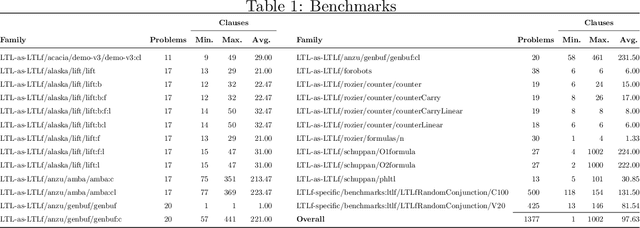
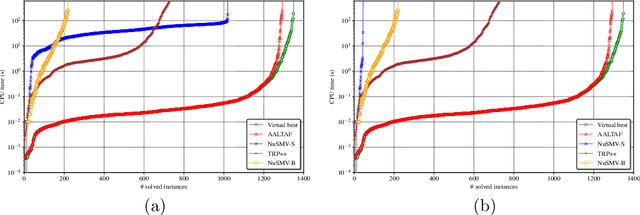
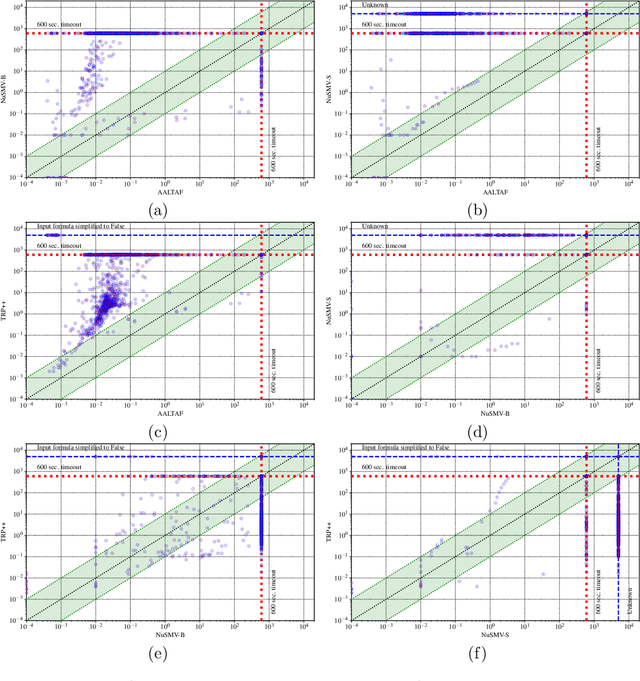
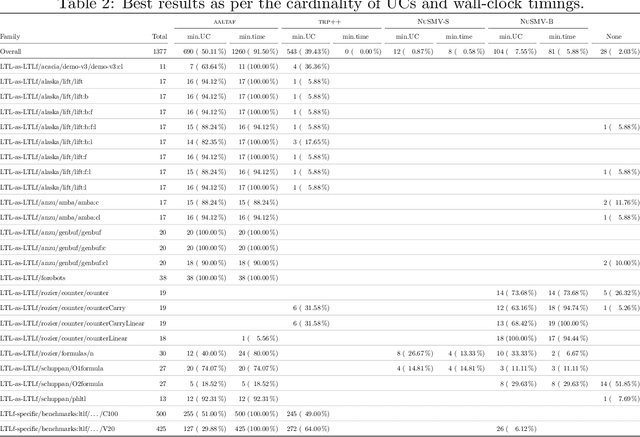
Abstract:Linear-time temporal logic on finite traces (LTLf) is rapidly becoming a de-facto standard to produce specifications in many application domains (e.g., planning, business process management, run-time monitoring, reactive synthesis). Several studies approached the respective satisfiability problem. In this paper, we investigate the problem of extracting the unsatisfiable core in LTLf specifications. We provide four algorithms for extracting an unsatisfiable core leveraging the adaptation of state-of-the-art approaches to LTLf satisfiability checking. We implement the different approaches within the respective tools and carry out an experimental evaluation on a set of reference benchmarks, restricting to the unsatisfiable ones. The results show the feasibility, effectiveness, and complementarities of the different algorithms and tools.
Conformance Checking of Mixed-paradigm Process Models
Nov 23, 2020



Abstract:Mixed-paradigm process models integrate strengths of procedural and declarative representations like Petri nets and Declare. They are specifically interesting for process mining because they allow capturing complex behaviour in a compact way. A key research challenge for the proliferation of mixed-paradigm models for process mining is the lack of corresponding conformance checking techniques. In this paper, we address this problem by devising the first approach that works with intertwined state spaces of mixed-paradigm models. More specifically, our approach uses an alignment-based replay to explore the state space and compute trace fitness in a procedural way. In every state, the declarative constraints are separately updated, such that violations disable the corresponding activities. Our technique provides for an efficient replay towards an optimal alignment by respecting all orthogonal Declare constraints. We have implemented our technique in ProM and demonstrate its performance in an evaluation with real-world event logs.
Entropia: A Family of Entropy-Based Conformance Checking Measures for Process Mining
Sep 30, 2020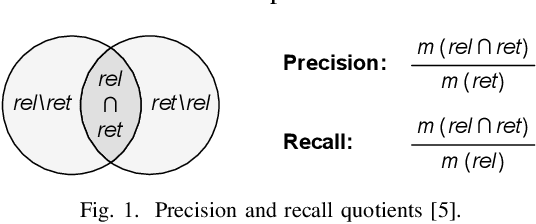
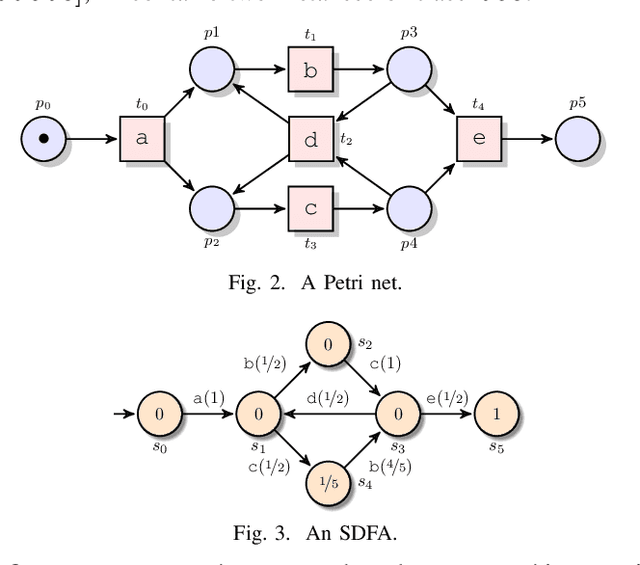

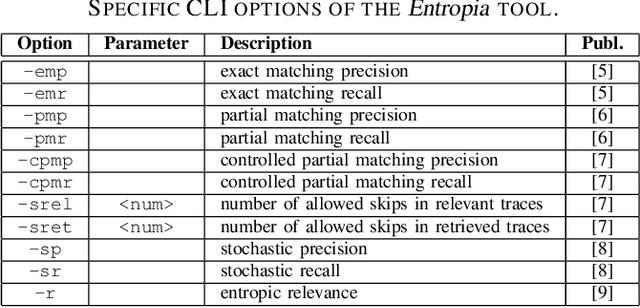
Abstract:This paper presents a command-line tool, called Entropia, that implements a family of conformance checking measures for process mining founded on the notion of entropy from information theory. The measures allow quantifying classical non-deterministic and stochastic precision and recall quality criteria for process models automatically discovered from traces executed by IT-systems and recorded in their event logs. A process model has "good" precision with respect to the log it was discovered from if it does not encode many traces that are not part of the log, and has "good" recall if it encodes most of the traces from the log. By definition, the measures possess useful properties and can often be computed quickly.
Comprehensive Process Drift Detection with Visual Analytics
Jul 15, 2019



Abstract:Recent research has introduced ideas from concept drift into process mining to enable the analysis of changes in business processes over time. This stream of research, however, has not yet addressed the challenges of drift categorization, drilling-down, and quantification. In this paper, we propose a novel technique for managing process drifts, called Visual Drift Detection (VDD), which fulfills these requirements. The technique starts by clustering declarative process constraints discovered from recorded logs of executed business processes based on their similarity and then applies change point detection on the identified clusters to detect drifts. VDD complements these features with detailed visualizations and explanations of drifts. Our evaluation, both on synthetic and real-world logs, demonstrates all the aforementioned capabilities of the technique.
QRFA: A Data-Driven Model of Information-Seeking Dialogues
Dec 27, 2018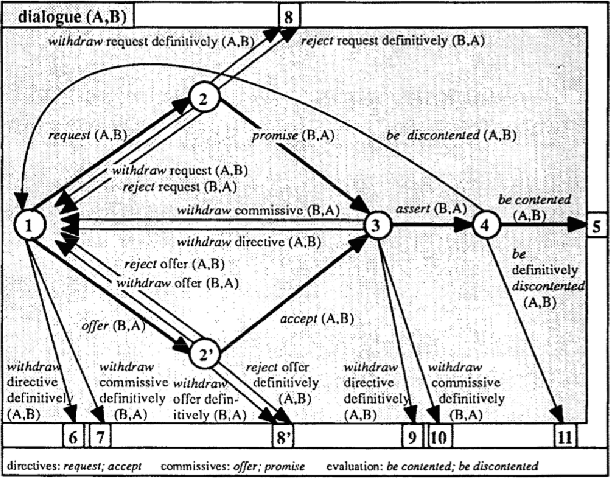

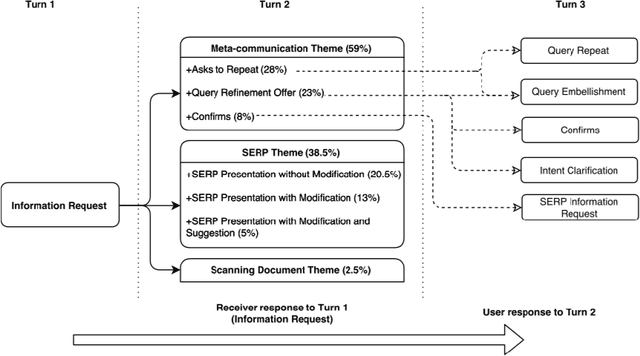

Abstract:Understanding the structure of interaction processes helps us to improve information-seeking dialogue systems. Analyzing an interaction process boils down to discovering patterns in sequences of alternating utterances exchanged between a user and an agent. Process mining techniques have been successfully applied to analyze structured event logs, discovering the underlying process models or evaluating whether the observed behavior is in conformance with the known process. In this paper, we apply process mining techniques to discover patterns in conversational transcripts and extract a new model of information-seeking dialogues, QRFA, for Query, Request, Feedback, Answer. Our results are grounded in an empirical evaluation across multiple conversational datasets from different domains, which was never attempted before. We show that the QRFA model better reflects conversation flows observed in real information-seeking conversations than models proposed previously. Moreover, QRFA allows us to identify malfunctioning in dialogue system transcripts as deviations from the expected conversation flow described by the model via conformance analysis.
 Add to Chrome
Add to Chrome Add to Firefox
Add to Firefox Add to Edge
Add to Edge